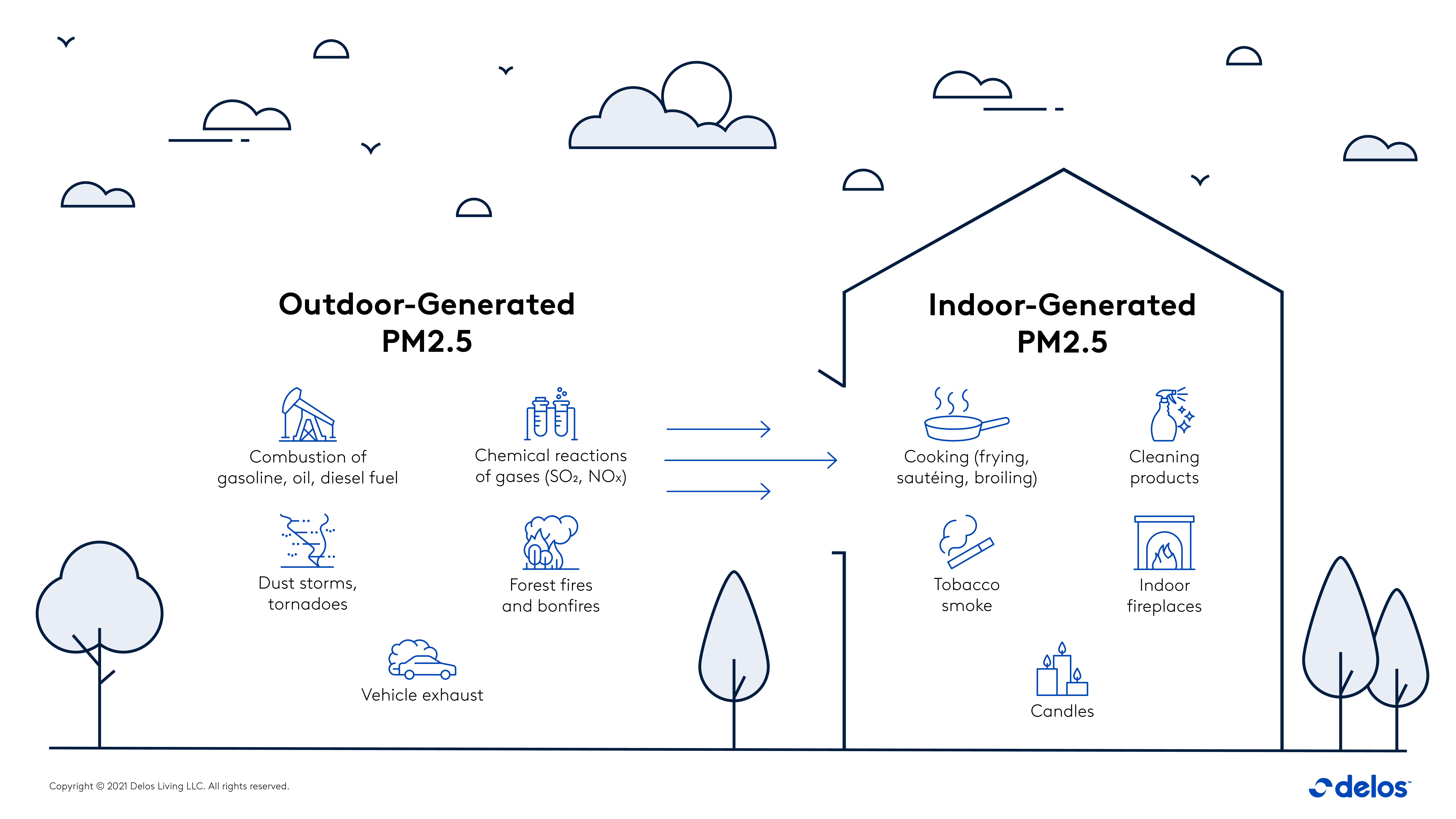Global Earth Challenge
Most of the air pollution we breathe indoors comes from outside
July 8, 2021
We usually think of air pollution as an outdoors issue — something we should worry about while outside. But that’s a common misconception; the vast majority of our exposure to the most harmful outdoor air pollutants actually occurs indoors. This has important implications for how we think about — and act on — both indoor and outdoor air pollution.
What is fine particulate matter and how does it affect our health?
Fine particulate matter, or PM2.5, is a collection of tiny particles that are 2.5 micrometers or less in diameter. These particles are so small that once inhaled, they can penetrate our lungs and even get into our bloodstream.
Chronic PM2.5 exposure is associated with a number of symptoms and health issues. Short-term effects include irritation of the eyes, nose, throat or lungs; sneezing; coughing; shortness of breath; and worsening of asthma.
Long-term exposure can lead to stroke; ischemic heart disease; chronic respiratory diseases and infections; neonatal disorders; vision loss; and tracheal, bronchus and lung cancer. And unfortunately, even low levels of PM2.5 (at concentrations below current national standards) have been linked to greater mortality.
Exposure to PM2.5 indoors

Outdoor air is not limited to just the outdoors. It gets inside through windows, doors and HVAC systems, bringing pollutants along with it. Most of our exposure to ambient (outdoor) PM2.5 actually occurs indoors — and over two thirds (67%) occur in our homes.
This has devastating health consequences: we now know that indoor exposure to outdoor PM2.5 is responsible for about half of all deaths associated with PM2.5 pollution.
Sources of outdoor PM2.5 include vehicle exhaust, burning of fossil fuels and firewood and non-human activities such as wildfires and dust storms. Roadway traffic is a significant source of ambient air pollution. 15% of schools in the U.S. (6.4 million children) are located less than 250 meters (820 feet) away from a major roadway.
Fortunately, traffic-related air pollutants decrease with increasing distance to major roadways, with many pollutants indistinguishable from background levels at a distance of 250 meters or more. However, schools located closer than that may expose students to higher levels of traffic-related air pollution, which has been associated with increased asthma diagnosis and decreased working memory scores.
Some particulate matter can also be generated indoors, from smoking, cooking, cleaning, burning candles and using personal care products. However, indoor-generated PM2.5 accounts for a smaller proportion of our overall exposure to PM2.5 (in developed countries).
How can we reduce our exposure to air pollution while indoors?
While the effects of PM2.5 pollution may seem daunting, there are steps that we all can take to breathe cleaner — and easier.
- Increase outdoor air ventilation rate. Whether through mechanical ventilation systems or opening windows when outdoor conditions are good, ventilation is an effective way to improve indoor air quality.
- Use an air quality monitor to track air pollution levels. Many consumer-grade monitors are available online.
- Get an air purifier. Use of portable air purifiers in homes, offices and schools has been found to reduce PM2.5 by up to 92%. During wildfires, the use of air purifiers can help reduce PM2.5 exposure by 55–92%. Delos offers an array of advanced air purification solutions. The Delos Compact, which uses patented disinfecting filtration system (DFS) technology, is able to remove 99.99% of particles 0.3 microns in size, which is more efficient than the HEPA standard testing efficiency requirement.
- Stay informed about outdoor levels of air pollution in your area, or buy your own outdoor air quality monitor. If the outdoor air quality is poor, keep your windows closed. You can also download Global Earth Challenge and sign up for EARTHDAY.ORG’s Pledge to Share Your Air to share your air quality data with scientists and help advance air quality research.
- Consider switching to a hybrid or an electric car to help reduce the amount of particulate matter your vehicle emits into the air.
